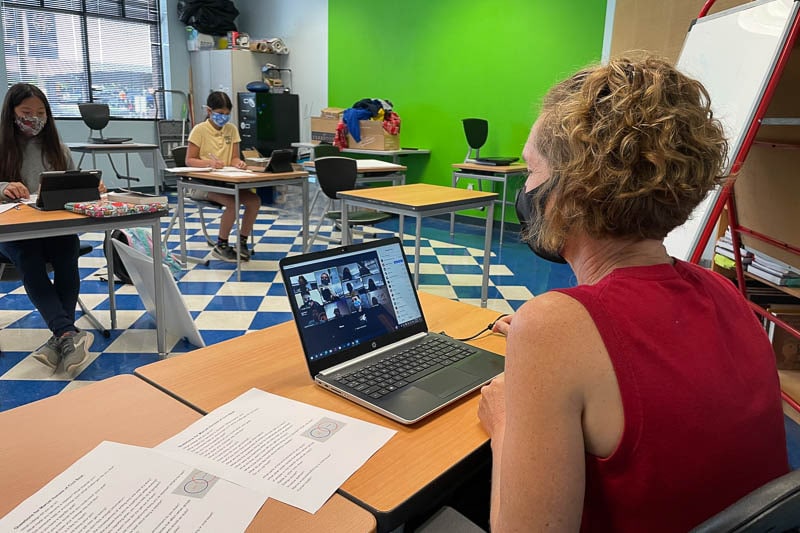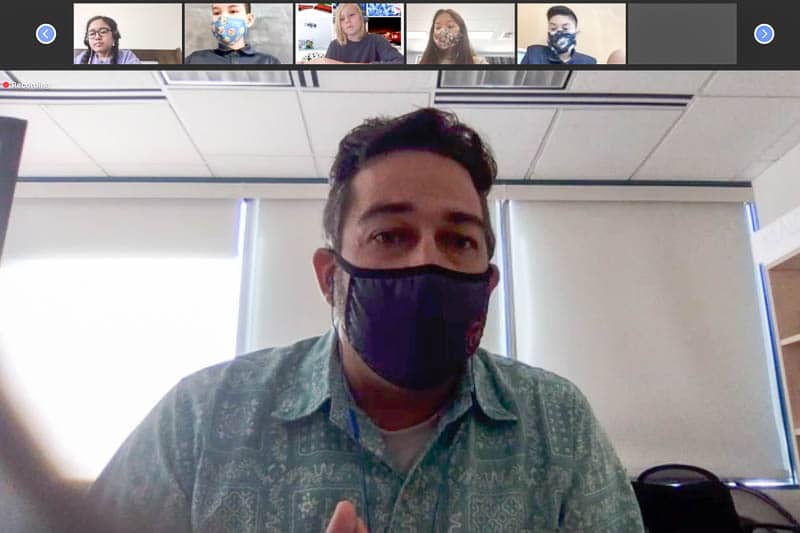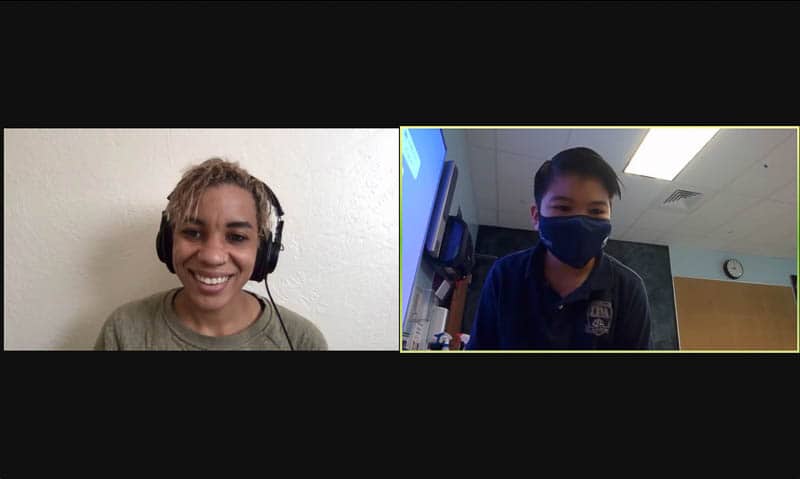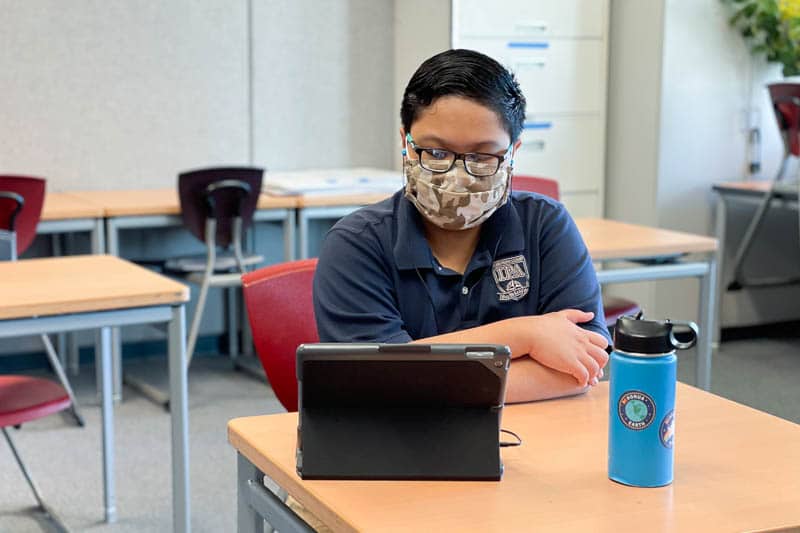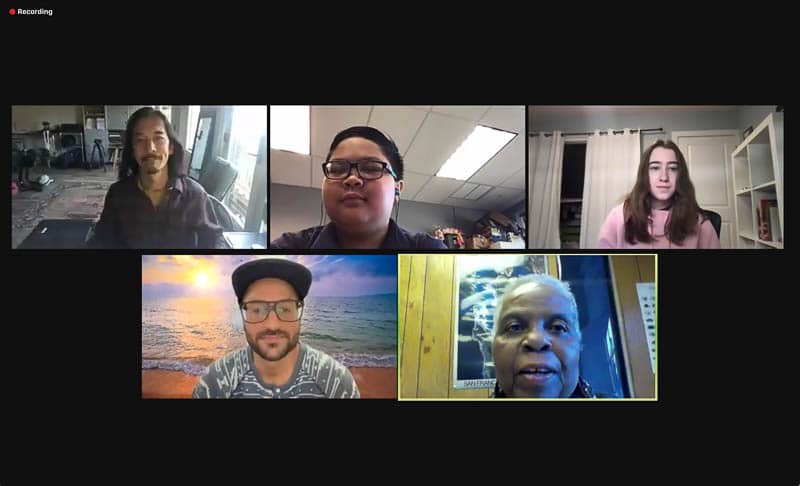Whether they’re listening to a journalist discuss the devastating effects of drought on the Moloka’i deer population, or participating as panelists alongside filmmakers in a national discussion about the power of place-based storytelling, IPA’s Grade 6 Design Tech students are earnestly exploring ideas around environmental justice.
“Environmental justice is a tricky concept that we redefine almost on a daily basis,” explains Dora Chilton, IPA’s Grade 6 Design Tech teacher. “The students are more and more aware of environmental issues, from prior and current experience and study. Environmental justice takes things one step further. We keep asking ourselves, ‘How does this problem unfairly or disproportionately affect certain groups of people on the island?’ Often the answer is people of low-income, native Hawaiians, women, and other underrepresented and underserved groups.”
“Last year, we got to personally know some of the houseless population in Waiʻanae through some of our service activities,” explains Chilton. “This year, we have become close with organizers at the Navigators’ Center and Waiʻanae Neighborhood Place, both sites to assist low-income families, and the students have come to understand the human faces behind the numbers.”
As part of their exploration of environmental justice, the students met with invited guest speakers from the community who shared different perspectives on what environmental justice encompasses – from climate change to socioeconomic inequity to racism. Civil Beat reporter, Marcel Honore, spoke about his work as a journalist covering the effects of climate change on human and animal populations, and Hannah Shipman, Impact Project Director for Blue Planet Foundation, discussed how renewable and non-renewable sources of energy impact climate change. Ranjani Starr, Health Analytics & Informatics Administrator for the state of Hawai’i, talked with the students about factors that affect health disparities – socioeconomic factors, environment, behaviors, and availability of care.
Students also learned about the importance of storytelling in effecting change by participating in discussions with environmental advocates and filmmakers and directors through an EarthX webinar. And two students, Jaron Alcaron ‘27 and Maddie Roe ‘27, were invited to participate as student panelists alongside two documentary filmmakers in an environmental justice webinar hosted by Redford Center Stories at The Redford Center.
The students are now working in teams to formulate a specific “call to action” that people right here, right now can take to address these issues in big and small ways, and they are creating video clips to submit to the Redford Center Stories Environmental Justice Youth Filmmaking Challenge.
The connection between environmental justice and design tech may not be obvious at first, but Chilton explains how the two come together through the students’ activities.
“Design tech is based on the design-thinking process – empathize with stakeholders/research a situation, define the issue, ideate or brainstorm ways to address the issue, and prototype and test the ‘solution’”, explains Chilton. “We have been empathizing/researching via discussions, investigations, interviews, and simulations for two months. Now we are diving into the technical side – making a 90-second video about what environmentalism and environmental justice looks like to them.”
“I really hope that we all get a real sense of what issues are affecting Hawaiʻi and Hawaiians and what can be done about these issues. Melting ice caps and desperate polar bears affect us indirectly, but there are plenty of people, plants, and animals that are feeling the effects right here.”
Students have taken the lessons to heart and have already taken action. One ran for student government to share her studies on environmental justice and take action with other student government members. Another started a fundraising campaign to make and sell masks, with the proceeds donated to the Navigators’ Center. And yet another donated her own money to help support projects at the Navigators’ Center.
“None of this could have happened without the unwavering support and enthusiasm of so many – Brandy Sato, Michelle Bradley, Lynn Lethin, Laura Guzman, Shanon Kimura, Jillian Steele, Aparna Cheerath, Kapua Adams, and others,” says Chilton. “It really takes a village and IPA is full of amazing villagers.”
